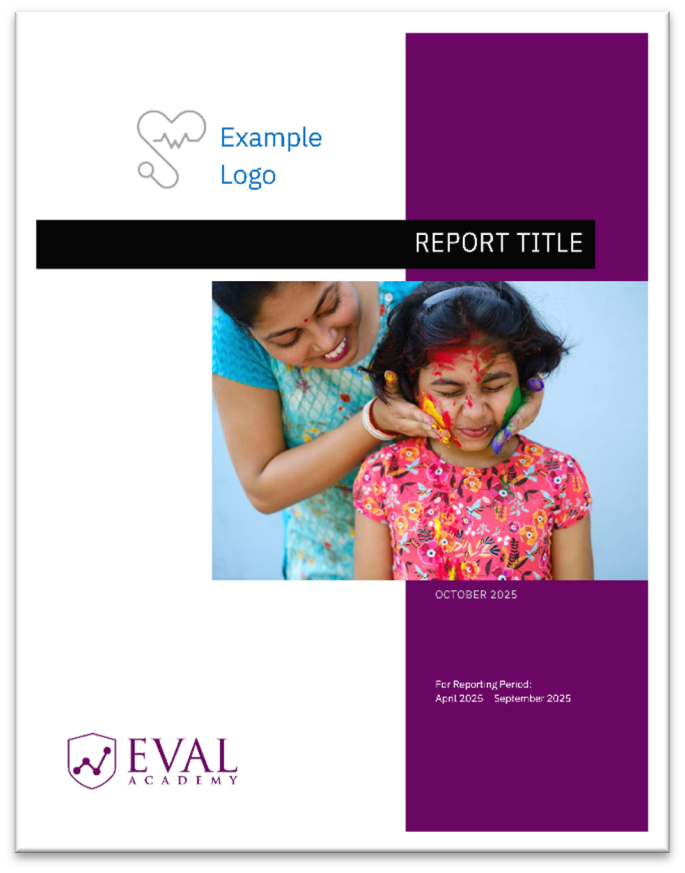Creating A Meaningful Funder Report
August 2025
This article is rated as:
Crafting meaningful funder reports is essential for communicating the story and impact of your program. As fall approaches, many organizations find themselves preparing interim reports for their funders. But what if your funder hasn’t provided a template? How do you create a report that not only meets their information needs but highlight’s your program’s success and strengthens your case for continued support? Below, you’ll find guidance on putting together an effective funder report.
Before you start compiling numbers or drafting sections, it’s important to consider what your funder is looking for in this report. Do they want a succinct report primarily with numbers showing what you did, or should you focus more on experiences? With this knowledge you can build the report your funder needs that also highlights your program’s impact. Think of this report as more than simply fulfilling a requirement—view your report as an opportunity to communicate your program’s value, learnings, and growth.
Collecting and Preparing Your Data
Prepare your data in advance of writing your report to make it easier to meet your funder deadlines. Consider preparing the following data:
Quantitative Data: Begin by gathering and verifying the data’s accuracy. Go through your data and clean up redundant data. For tips on data cleaning, refer to our article: Let Excel Do The Math: Easy Tricks To Clean And Analyze Data In Excel.
Qualitative Data: Supplement your numbers with contextual information gathered from surveys, interviews, or focus groups. Begin collecting key quotes, so you have them ready for when you begin writing. For guidance on qualitative data collection, enroll in our upcoming course: Evaluation Data Collection Methods.
Visuals: Photos, artwork, and charts can make your report more engaging. Ensure you have permission from the creators or participants to use these visuals. Prepare charts based on quantitative data you’ve analyzed. For ideas for your data viz, refer to our infographic: Data Viz Decision Tree Infographic.
Case Study: A case study can guide your reader through the challenges and changes a participant of your program may experience. This may further humanize your data. If using a case study, obtain the participant’s permission and prepare it with a pseudonym and change identifying details. For tips on including a case study, refer to our infographic: Using Case Studies In Your Evaluation Tip Sheet.
Structuring Your Report
A well-organized report is easier for funders to read and understand. Consider the following structure:
Title Page: Clearly state your program’s name, the reporting period, and submission date. Perhaps use both your organization and the funder logos. Consider adding an interesting graphic to set the tone of your report. See image for an example title page.
Executive Summary: This section is more important for larger reports, as it provides an overview of the program, who it services, some community context, key success, major challenges, lessons learned, and future directions. Writing this section after your report is written ensures this reflects the report’s main points.
Table of Contents: Essential for longer reports, a table of contents helps the reader navigate your document. Be sure that the Table of Contents is updated when the report is finalized to ensure all the page numbers are accurate. Using Word’s automated Table of Contents allows readers to click on the section they would like to go to.
Program Overview: Describe your program’s purpose, target audience, and the community context to explain the need your program fills. Clearly outline the program’s goals and objectives, participant demographics, data collection methods, and any other relevant background your reader needs.
Key Findings: This should be the largest section of your report. Present your program’s impacts and challenges, organized by theme or participant group for clarity. Use both quantitative and qualitative data, highlighting stories or quotes that illustrate your findings.
Recommendations and Conclusions: Summarize lessons learned and suggest next steps to address challenges. Avoid introducing new data. Focus instead on reflection and actionable insights for the future.
Financial Statements: Funders usually require financial statements; these may be a separate submission. Be sure these statements are clear and transparent and follow your funder’s specific requirements for documentation and format.
Appendices: Use these for supplemental materials like detailed data tables, or additional content that supports your main report but would disrupt its follow if were included in the report body.
Writing Tips
Adhere to Guidelines: Always follow any instructions or format preferences provided by your funder and submit reports on time. Missing a deadline or ignoring guidelines can negatively impact your funder’s perception of your report and your organization.
Be Honest and Transparent: Acknowledge both successes and challenges. Funders value candour and appreciate learning from honest accounts of what worked and what didn’t. Problems you encounter can provide important lessons learned and inform future improvements.
Use Evidence, Not Just Anecdotes: Use both qualitative and quantitative data to support your claims. Clearly state your data sources but consider aggregating small or sensitive groups to ensure confidentiality.
Highlight Achievements Without Overwhelming Detail: Focus on key accomplishments but avoid burying them in excessive detail. Make your main points easy to find and understand.
Incorporate Visuals Thoughtfully: Charts, photos, and artwork can help tell your program’s story.
Proofread Thoroughly: Take time to review your report for spelling, grammar, and clarity. A polished report demonstrates professionalism and care.
For additional support, see:
Our article: 9 Common Writing Mistakes In Evaluation
Our tipsheet: Top 10 Grammar Mistakes to Watch Out For In Evaluation Writing
An effective funder report does more than account for resources—it weaves together evidence, narrative, and reflection to convey the true value and progress of your program. A thoughtful report not only demonstrates effective stewardship of funds but also builds trust and strengthens the partnership between your organization and its funder. By sharing achievements, honest reflections, and clear future direction, you invite funders to be engaged partners.


